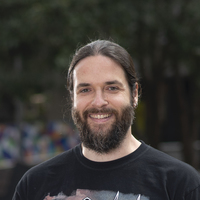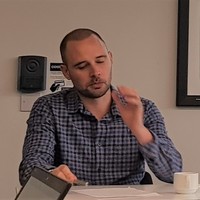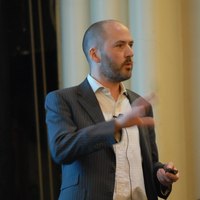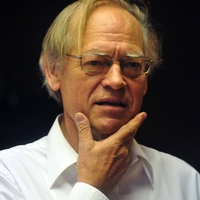Tanja Bisgaard
Address: Novitas Innovation
less
Related Authors
Naim Kapucu
University of Central Florida
Giovanni Marin
Università di Urbino "Carlo Bo"
Armando Marques-Guedes
UNL - New University of Lisbon
Simon Springer
The University of Newcastle
Andrew W Wilkins
Goldsmiths, University of London
Will Davies
Goldsmiths, University of London
Jan N . Bremmer
University of Groningen
Peter J Mellalieu
Unitec New Zealand
Maryse Chappin
Utrecht University
Eckart Otto
Ludwig-Maximilians-Universität München










Uploads
Papers by Tanja Bisgaard
innovation is inspiring companies: doing good. Companies are entering into the
era of Corporate Social Innovation.
Companies are increasingly realising that there is an economic perspective in
participating in solving social and environmental problems. The companies see
these problems as opportunities for creating new business concepts. Doing good
is being talked about in company board rooms and included into companies’
business models.
We are currently experiencing turbulent times, where the financial crises in
particular is creating strains on companies’ business models and challenging
their ability to stay profitable. Corporate Social Innovation will without a doubt
be considered as vital when companies look for solutions to their financial
problems. Almost 40% of Danish companies today see climate change and
pollution reduction as relevant future business areas. In addition, a recent study
from Harvard University identifies CSI as an important competitive parameter for
Danish companies.
The government alone cannot create the necessary conditions for Corporate
Social Innovation in Denmark. For this new driver of innovation to gain enough
strength and momentum and “grow roots”, the public sector will have to take
on a new role and cooperate with companies on changing and creating future
relevant legislation that can ensure companies social innovations.
We hope this report will illustrate how companies can participate in solving the
global challenges while they simultaneously remain profitable.
innovations for companies and organisations. Based on our research we have been able to identify four
generic methods of working with user driven innovation: user test, user exploration, user innovation and
user participation. Even though these methods might vary slightly from one company to the other, they
have some basic features which are common. When working with users, companies might chose to include
the users either directly or indirectly in the innovation process, depending on what type of knowledge
the company wants to obtain from the user. Users’ ability to communicate and express their problems
and needs varies greatly and will also influence the user driven innovation method chosen by a company.
Sometimes users are fully aware of what problems they face and which needs they experience, while
in other cases they will not be able to communicate or articulate what they are experiencing. Based on
this framework we interviewed companies in the Nordic and Baltic countries about how they work with
user driven innovation, what innovation outcomes their achieved and how satisfied they were with the
processes during the project. Furthermore we wanted to get an understanding of whether there were any
differences among the Nordic and Baltic countries regarding the methods they used by mapping the user
driven innovation activity among companies and organisations.
Participants
Denmark
Tanja Bisgaard, Manager of Policy Analysis, FORA
Casper Høgenhaven, Høgenhaven Consulting
Lise Andersen, Analyst, FORA
Josefine Campbell, Campbell & Co.
Louise Marianne Lempel, Research Assistant, FORA
Tobias Ritzau-Kjærulff, Research Assistant, FORA
Finland
Turkka Keinonen, Doctor of Arts, University of Art and Design Helsinki
Marjo Mansen-laalo, research assistant
Norway
Jan Capjon, Professor, Oslo School of Architecture and Design, Institute of Industrial
Design
Håkan Edeholt, Oslo School of Architecture and Design, Institute of Industrial Design
Jørn Knutsen, Oslo School of Architecture and Design, Institute of Industrial Design
Marie Sneve Martinussen, research assistant
Sweden
Lars Sandberg, Innovation coordinator, DOTANK/THE PACKAGING ARENA
Thomas Edman, DOTANK/THE PACKAGING ARENA
Baltic countries
Peeter Raudsepp, Geoconsult
Bjørn Hjulman, Geoconsult
Dirk Pilat, Head, Structural Policy Division, Directorate for Science, Technology and Industry, OECD.
Jørgen Rosted, Director of FORA
Charlotte Kjeldsen, Creative Director
Tanja Bisgaard, Manager of Policy Analysis
Glenda Napier, Manager of Policy Analysis
In addition, a number of FORA colleagues have provided valuable contributions throughout the process. These colleagues include:
Lise Andersen, Analyst
Josefine Campbell, Analyst
Thomas Ebdrup, Analyst
Henrik Lynge Hansen, Analyst
Casper Høgenhaven, External Consultant
Rikke Blæsbjerg Nielsen, Research Assistant
Copenhagen, September 2009
13 examples from around the world where regulatory barriers have been adressed and policy makers are working on new solutions.
Summary in Danish.
innovation is inspiring companies: doing good. Companies are entering into the
era of Corporate Social Innovation.
Companies are increasingly realising that there is an economic perspective in
participating in solving social and environmental problems. The companies see
these problems as opportunities for creating new business concepts. Doing good
is being talked about in company board rooms and included into companies’
business models.
We are currently experiencing turbulent times, where the financial crises in
particular is creating strains on companies’ business models and challenging
their ability to stay profitable. Corporate Social Innovation will without a doubt
be considered as vital when companies look for solutions to their financial
problems. Almost 40% of Danish companies today see climate change and
pollution reduction as relevant future business areas. In addition, a recent study
from Harvard University identifies CSI as an important competitive parameter for
Danish companies.
The government alone cannot create the necessary conditions for Corporate
Social Innovation in Denmark. For this new driver of innovation to gain enough
strength and momentum and “grow roots”, the public sector will have to take
on a new role and cooperate with companies on changing and creating future
relevant legislation that can ensure companies social innovations.
We hope this report will illustrate how companies can participate in solving the
global challenges while they simultaneously remain profitable.
innovations for companies and organisations. Based on our research we have been able to identify four
generic methods of working with user driven innovation: user test, user exploration, user innovation and
user participation. Even though these methods might vary slightly from one company to the other, they
have some basic features which are common. When working with users, companies might chose to include
the users either directly or indirectly in the innovation process, depending on what type of knowledge
the company wants to obtain from the user. Users’ ability to communicate and express their problems
and needs varies greatly and will also influence the user driven innovation method chosen by a company.
Sometimes users are fully aware of what problems they face and which needs they experience, while
in other cases they will not be able to communicate or articulate what they are experiencing. Based on
this framework we interviewed companies in the Nordic and Baltic countries about how they work with
user driven innovation, what innovation outcomes their achieved and how satisfied they were with the
processes during the project. Furthermore we wanted to get an understanding of whether there were any
differences among the Nordic and Baltic countries regarding the methods they used by mapping the user
driven innovation activity among companies and organisations.
Participants
Denmark
Tanja Bisgaard, Manager of Policy Analysis, FORA
Casper Høgenhaven, Høgenhaven Consulting
Lise Andersen, Analyst, FORA
Josefine Campbell, Campbell & Co.
Louise Marianne Lempel, Research Assistant, FORA
Tobias Ritzau-Kjærulff, Research Assistant, FORA
Finland
Turkka Keinonen, Doctor of Arts, University of Art and Design Helsinki
Marjo Mansen-laalo, research assistant
Norway
Jan Capjon, Professor, Oslo School of Architecture and Design, Institute of Industrial
Design
Håkan Edeholt, Oslo School of Architecture and Design, Institute of Industrial Design
Jørn Knutsen, Oslo School of Architecture and Design, Institute of Industrial Design
Marie Sneve Martinussen, research assistant
Sweden
Lars Sandberg, Innovation coordinator, DOTANK/THE PACKAGING ARENA
Thomas Edman, DOTANK/THE PACKAGING ARENA
Baltic countries
Peeter Raudsepp, Geoconsult
Bjørn Hjulman, Geoconsult
Dirk Pilat, Head, Structural Policy Division, Directorate for Science, Technology and Industry, OECD.
Jørgen Rosted, Director of FORA
Charlotte Kjeldsen, Creative Director
Tanja Bisgaard, Manager of Policy Analysis
Glenda Napier, Manager of Policy Analysis
In addition, a number of FORA colleagues have provided valuable contributions throughout the process. These colleagues include:
Lise Andersen, Analyst
Josefine Campbell, Analyst
Thomas Ebdrup, Analyst
Henrik Lynge Hansen, Analyst
Casper Høgenhaven, External Consultant
Rikke Blæsbjerg Nielsen, Research Assistant
Copenhagen, September 2009
13 examples from around the world where regulatory barriers have been adressed and policy makers are working on new solutions.
Summary in Danish.